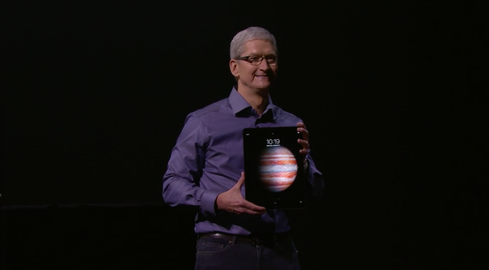Apple Faces $862 Million Processor Patent JudgmentApple Faces $862 Million Processor Patent Judgment
A jury says Apple infringed on technology that makes processors more efficient.


iPhone 6S, iPad Pro, TV, Watch: Apple's Fall Lineup
iPhone 6S, iPad Pro, TV, Watch: Apple's Fall Lineup (Click image for larger view and slideshow.)
Apple could be on the hook for significant monetary damages after a jury said it violated processor patents owned by the University of Wisconsin.
The Wisconsin Alumni Research Foundation (WARF), which manages inventions created by researchers at the school, sued Apple in January 2014 over technology found in the A7, A8, and A8X processors. The chips are found in the Apple iPhone 5s, iPhone 6, iPhone 6 Plus, and several different iPad models. The patent dates back to 1998 and covers processor efficiency. Specifically, the patent covers a "table-based data speculation circuit for a parallel processing computer." This is meant to improve power efficiency through a brand predictor.
WARF says it offered to license the patent to Apple, but the iPhone maker refused to entertain the idea. WARF is known to vigorously defend its patents. Intel settled with WARF in 2009 for an undisclosed sum over similar claims.
Apple initially sought to have the patent declared invalid. The US Patent and Trademark Office, however, denied Apple's request to examine the patent's merits, and so allowed the trial to move forward.
The Madison, Wis., jury not only found Apple guilty of using the patent without permission, but also upheld the patent's validity. With the main decision reached, the trial will move into the damages phase. Apple could owe WARF as much as $862 million in fines, and much more if the judge decides Apple violated the patent willfully and/or with intent.
Apple didn't comment on the court's decision this week, but has maintained its innocence throughout the trial.
WARF filed a second lawsuit against Apple last month after the company debuted the A9 and A9X processors for the iPhone 6s, the iPhone 6s Plus, and the iPad Pro, respectively. WARF says it believes the new processors violate the same patent. Apple hasn't yet commented on the new lawsuit.
[Apple's latest iMac refresh includes more powerful processors and prettier graphics.]
Patent lawsuits have become a familiar tactic in the battle for smartphone market supremacy. Apple has locked horns with Samsung over patents since 2011. The companies settled most of their pending lawsuits around the world, but are still tussling over a 2012 court decision that initially awarded Apple $1.05 billion.
In that case, Apple claimed Samsung violated not only its patents, but also its trade dress (phone designs). A California jury agreed that Samsung violated Apple's patents and trade dress, but a recent appeals decision reversed the trade dress ruling. This particular matter has yet to be resolved, but it appears as though Samsung will eventually owe Apple around $600 million.
Microsoft and Motorola recently settled a significant lawsuit over the use of WiFi technology.
About the Author
You May Also Like






